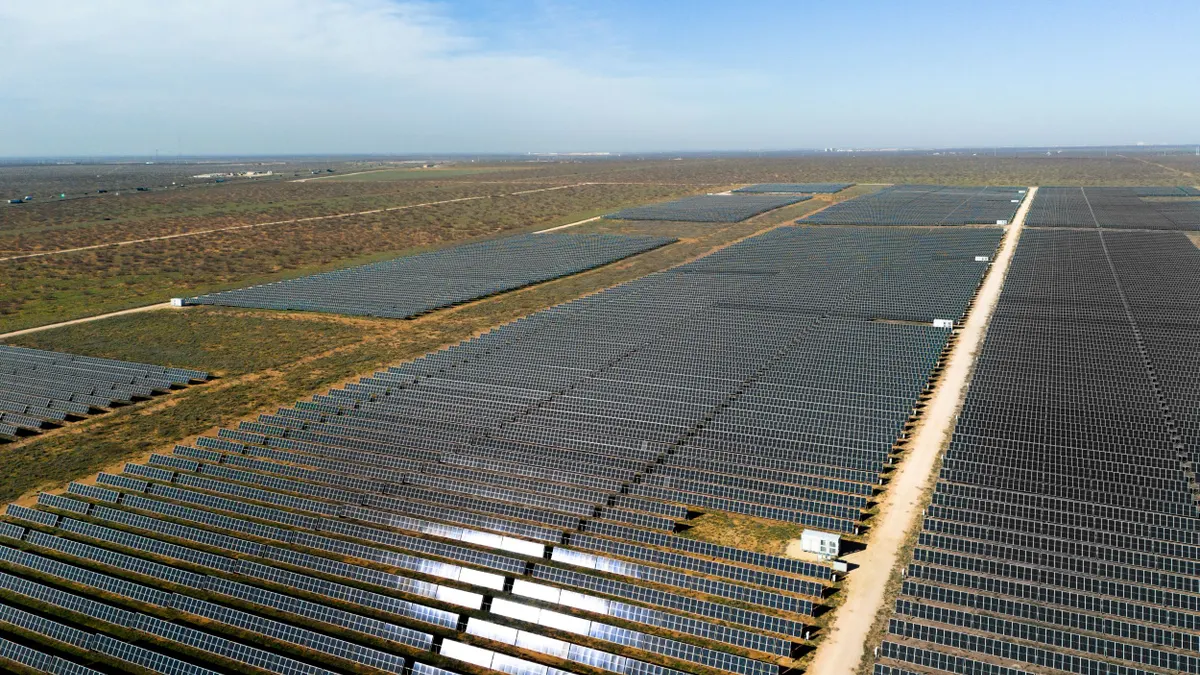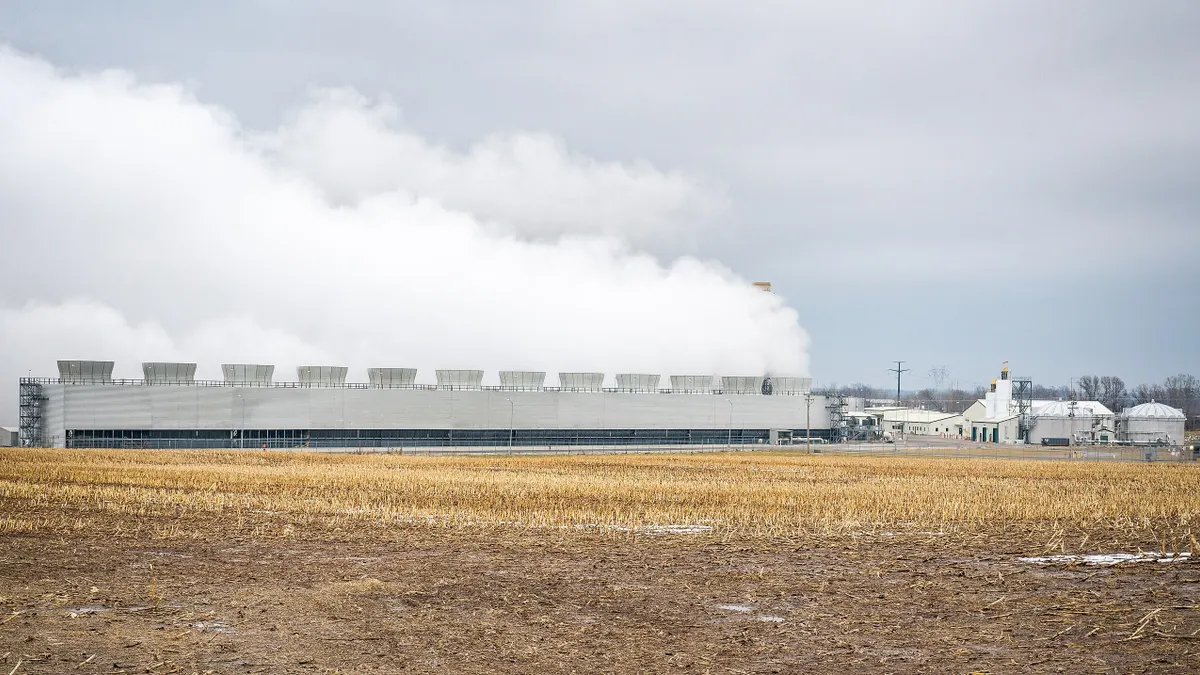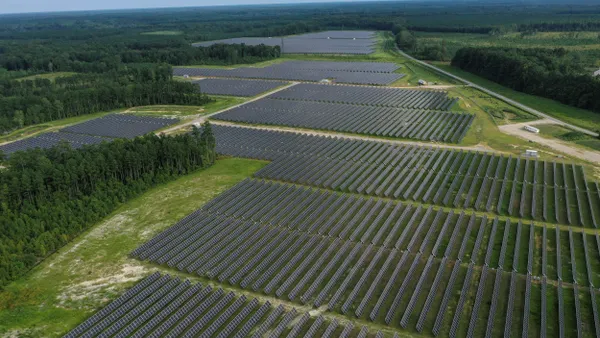Distributed energy resources (DERs) are the focus of energy industry and policy debates across the country, but up to this point virtually all the action has taken place at the state level. Because state regulatory commissions typically govern the utilities in their jurisdiction, the battles over the interconnection, siting, and value of DERs have played out almost exclusively in the states. The federal government has had precious little to do with the issue.
But that may be about to change if Sen. Angus King (I-ME) has his way. The senator, who caucuses with Democrats, plans to unveil the Free Market Energy Act of 2015 on Wednesday. An amendment to the Public Utilities Regulatory Policy Act (PURPA) of 1978, the bill could dramatically alter market structures and regulations for DERs nationwide.
The goal of the legislation, King told Utility Dive in an interview, is to codify a right of interconnection for DERs and guide states toward a policy framework to better assess their full value and encourage their proliferation.
“What we’re trying to do is establish a clear right to interconnect from your home,” he said, “and secondly to establish not a strict formula, but a set of criteria for the states to look at in terms of setting what the reasonable and just interconnection costs and backup charges [are], talking about unbundling rates, time-of-use, location — the things that will make the distributed generation most valuable to the homeowner and the grid.”
The bill would provide for “the right of DER to connect in a reasonable timeframe and only be charged just and reasonable fees,” according to a fact sheet on the bill provided to Utility Dive by the senator's office.
The proposed legislation would direct states to “consider just and reasonable rates for DER in an unbundled manner.” In assessing the value of DERs to utilities and customers, states would have to consider mechanisms such as time-of-use pricing, locational value, and the societal benefits of distributed resources, among other valuation components. The goal of these rates will be to "incentivize rational behavior in the energy market and better account for the two-way value of DER to the grid and the grid to DER."
Currently, rates for DERs such as rooftop solar are largely uniform and disregard the time, location, and value of the resource to the grid and its customers. Over the last few years, utilities, distributed energy advocates and regulators have struggled to come to a consensus over whether and how DERs should be compensated in the market.
The struggle to accurately value DERs undergirds much of the nationwide wrangling over distributed energy. While DER vendors argue that the resources provide benefits to the grid that aren’t reflected in rates, utilities argue that DERs complicate grid operations and shift the costs of operating the grid to non-DER owners.
“We’re trying to provide some sort of policy parameters, if you will, to help the states as they work through this. That’s really the purpose,” King said. “The idea of the bill is to try to guide us in that direction [of unbundled pricing and accurate DER valuation], so that we don’t have low-level warfare around the country in trying to establish this.”
If states do not consider and establish unbundled pricing for DERs under King's bill, the resources would be considered Qualifying Facilities (QF) under PURPA.
That, energy experts say, would be a dramatic departure from the status quo — one that could reshape energy policy and markets nationwide.
The importance of 'Qualifying Facilities'
The concept of a Qualifying Facility — an entity that an electric utility is federally mandated to buy from under PURPA — is somewhat one of a bygone era, Georgetown Law professor and utility legal expert Scott Hempling told Utility Dive.
Back when PURPA was passed in 1978, federal lawmakers wanted to ensure that the nation’s utilities were sourcing their power from a diversity of companies — not just themselves. Utilities liked to build their own generation because they could rate base it and reap the profits, Hempling said, but lawmakers were concerned that they were stifling competition and not allowing other companies, especially minority-owned ones, into the market.
What a Qualifying Facility (QF) designation does for a company is mandate that a utility must buy power from it, Hempling said.
“What it does is it creates a federal obligation in the utility to buy whatever the QF has to sell, at the utility’s avoided cost,” he explained. “What PURPA did was change market structure by requiring monopolies to substitute what [other companies] wanted to sell them for what the utility would have done on its own. It’s a command from the federal government.”
Under King’s bill, if a state does not consider and implement unbundled rates in an attempt to better value DERs, then DERs will be given QF status — a radical shift from the status quo, according to Hempling. In the past, the concept was applied to larger-scale entities like generation companies, but King’s bill appears to extend the specification to the distribution system and the consumer's side of the meter if states fail to comply.
“Making a DER resource a QF under PURPA creates in that QF a right to force the utility to buy the DER’s output,” he said. “That’s why it’s a dramatic market structure change.”
QF status preempts any state regulation, Hempling explained. Even if a state passed a law or regulation to allow their local utility to control the DER market, the QF status would still force utilities to buy from non-utility DERs.
“Making the DER a QF is a federal rule preempting any state law which would otherwise allow the utility to tell this [DER company] to go fly a kite,” he said. “So, it simultaneously is creating an obligation in the utility and a right in the QF. The obligation in the utility is to buy; the right in the QF is to force the sale.”
Avoided costs and net metering
Under PURPA, the utilities are required to purchase from Qualifying Facilities at their avoided cost rate — the amount that they would have paid to build or purchase the resource in question had it not come from a QF.
Typically, state commissions are empowered to set the avoided cost rates for QFs, Hempling said. However, under King’s bill, if states do not unbundle rates for DERs, they would have to compensate DERs at the full retail electricity rate, a practice otherwise known as retail net energy metering. That would be a blow for many utilities, which often argue that net metering values solar too highly, diminishes their revenues and shifts undue costs to non-solar customers.
The legislation would also prohibit state commissions from setting fixed fees for customers higher than $10 per month, according to a draft version of the bill provided to Utility Dive. Increasing fixed charges is a common tactic used by utilities across the country to account for the cost and revenue shifts caused by the proliferation of DERs and stagnant load growth.
While retail net metering may be the consequence for states that fail to consider and adopt unbundling practices under the bill, King himself isn’t a fan of the idea.
“Right now, net metering is kind of a blunt instrument where it doesn’t necessarily provide the right incentives to point your solar panels where we need them pointed to maximize production when we need the power during the peak hours,” he said.
Not only that, but net metering does not solve valuation issues around other DERs. “This isn’t only about solar; it’s about demand response and energy efficiency and energy storage,” he said.
The fact that net metering is an insufficient tool for valuing DERs is part of the reasoning behind the push to develop a more complex valuation structure, King said. He would rather see better tools for evaluating the value of DERs, but there need to be a consequences for states that refuse.
“The enforcement mechanism is that if all else fails, net metering,” he said.
The novelty of QFs on the distribution grid
Hempling was surprised to hear of King’s Qualifying Facilities proposal when Utility Dive reached him.
“Nobody pays much attention to PURPA anymore,” he said, pointing out that most regions have competitive bidding for generation. Under that model, used in RTO, ISO and state electricity markets, QFs and non-QFs all bid to provide services to utilities, and the lowest cost wins.
“There isn’t much left in a practical sense of the obligation to force the sale because most things are done competitively,” Hempling said.
But while that’s true at the level of generation and transmission, those market structures have not yet been extended to the distribution grid. Only New York, with its ambitious REV initiative, appears to be on a path to create a marketplace for distributed energy resources — and even those plans are still in their infancy.
“You have wholesale competitive markets when states do competitive bidding, when the ISOs and RTOs do it,” Hempling said, “but what’s fascinating is at the distribution level you haven’t replicated that yet.”
King stressed that his bill only aims to guide utilities toward unbundled pricing and increased DER utilization. While there is an enforcement mechanism in the plan, states are left to confer with their local energy stakeholders about how best to unbundle rates and value DERs. The senator says he simply wants to make sure that regulators and utilities in the states aren’t inhibiting DER growth.
“It’s not a federal mandate, but we want to be clear that people do have the right to put a solar panel on their roof or put in a more efficient, time-of-day hot water heater, and they should have the opportunity to work with the utilities to maximize the value,” he said.
Other aspects of the bill: Distributed System Operators and transmission
While the concept of DERs as Qualifying Facilities may be the most novel aspect of King’s bill, it is by no means the only reform proposed. The Free Market Energy Act would also amend PURPA to direct states to consider designating a smart grid coordinator or a distribution system operator for the state, which could be a regulated utility, another entity entirely, or a partnership between a utility and a third party.
That section of the bill, King said, is meant to stimulate the kind of conversations around distribution system reforms that are already taking place in states like New York.
Under the REV model in that state, regulated utilities have been barred from owning DERs except in very specific circumstances. Instead, utilities are to operate as “air traffic controllers” of the distribution grid, coordinating and optimizing all the resources on it. California may soon consider similar reforms, with utility distributed resource system plans due this summer. A handful of other states may follow suit. Some notable figures, such as former FERC Chairman Jon Wellinghoff, would like to see the RTO/ISO model replicated on the distribution level, with an independent entity overseeing market transactions and operations on the distribution system.
King said that prompting states to consider these reforms is a “suggestion for a new business model for the utility, rather than simply contracting for power and having wires,” but he emphasized that the bill is not trying to pigeonhole states or utilities into one model.
“We’re trying to tread the line,” he said. “I don’t want this to be a federal mandate or too definitive, in part because nobody really knows what the answers are right now, but what we’re trying to do is provide some parameters to help this to develop in a positive direction.”
In addition to the distribution system reforms, the bill would also direct states to consider DER non-transmission alternatives when utilities propose transmission upgrades. Non-transmission alternatives would receive the avoided cost of the transmission upgrade, “minus a reasonable discount, as determined by the State regulatory authority,” the bill reads. Costs would be recovered from the rate base in the same manner as they would for transmission.
“When a transmission upgrade is proposed, often a non-transmission alternative can save ratepayers money,” the bill's fact sheet reads.
The bill’s chances
Ahead of introducing the bill on Wednesday, King said he couldn't predict its chances of passage.
“I’ve been working solely on the content and I haven’t had time to work on the politics,” he said. “That comes after we’ve got the bill introduced … that’s the next step.”
But while he hasn't yet built a coalition around the bill, passage of the bill as it is written may not be King’s end goal. On Monday, Sen. Lisa Murkowski (R-AK), the chair of the Energy and Natural Resources Committee on which King sits, called on her colleagues to file any energy bills they have for the session this week if they want to be considered for a big, bipartisan energy bill that she’s planning to put together. While King’s office would shed no light on the subject, it’s possible that he is floating the ambitious bill now in the hope that key aspects will be picked up in the larger bill later in the session.
One this is for sure, however: King’s approach is markedly different than previous federal energy bills, Hempling said. In deploying the Qualifying Facilities provision from the 1978 PURPA law, King is “pulling out something from ancient history that’s still on the books to break an impasse” over DER valuation.
“Somebody really put two and two together, and did something smart,” he said, adding that moving beyond the fixation on state-by-state solutions could help streamline DER adoption nationwide.
For King, a future based on more distributed energy is not so much a question of if, but rather how and when.
“I think this is the future in any case,” he said. “This is going to happen regardless of what we do. The question is it going to happen expeditiously and thoughtfully and reasonably — or is it going to be slow and involving a lot of friction that I think we can hopefully try to avoid.”





















